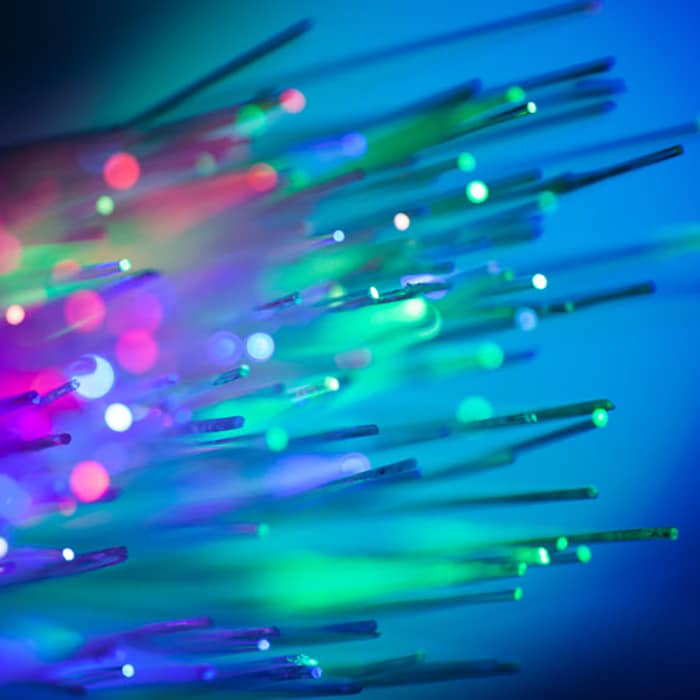Deep deployment of fiber optics is a national imperative has been saved

Perspectives
Deep deployment of fiber optics is a national imperative
The success of 5G wireless will hinge on deep fiber
Deep deployment of fiber optics into our nation’s network infrastructure might not be as glamorous as the eagerly anticipated launch of fifth-generation mobile networks (5G); however, it is just as important—if not more so. In fact, 5G relies heavily on fiber and will likely fall far short of its potential unless the United States significantly increases its deep fiber investments.
Explore content
- Download the report
- Major fiber investment is needed
- Fiber investment requires new monetization schemes
- Carriers and policy makers share responsibility
- Get in touch
Read our latest report
Broadband for all: charting a path to economic growth
An economic, technological, and social imperative
Despite the demand and economic imperative for fiber deployment, access networks in the United States lack the fiber density to support the bandwidth advancements necessary to improve the pace of innovation and economic growth. Increased speed and capacity from 5G will rely on higher radio frequencies and greater network densification (i.e., increasing the number and concentration of cell sites and access points).
Carriers will deploy many more small cells, “homespots,” and hotspots in higher frequency bands, with a coverage radius measured in meters rather than kilometers. Without more deep fiber, carriers will be unable to support the projected 4x increase in mobile data traffic between 2016 and 2021.
A second motivation for deep fiber deployment is to provide residential and business customers with increased broadband service choices. Deep fiber is a key tool for the national infrastructure imperative of providing consumers with high-speed broadband connections no matter where they live, at prices they can afford—thereby closing the “digital divide.”
Wireline broadband access supports as much as 90 percent of all internet traffic even though the majority of traffic ultimately terminates on a wireless device. Yet, 12 years after the first fiber-to-the-home deployments, only 38 percent of homes have a choice of two providers offering speeds of at least 25 Mbps. In rural communities, only 61 percent of people have access to 25 Mbps wireline broadband, and when they do, they can pay as much as a 3x premium over suburban customers.
Major fiber investment is needed
A Deloitte Consulting analysis estimates that the United States requires an investment of $130–$150 billion in fiber infrastructure over the next five to seven years to adequately support broadband competition, rural coverage, and wireless densification. This massive investment will likely need to come from a variety of sources, including communications service providers, financial investors, and public/private partnerships.
Unfortunately, the current wireline industry structure does not provide sufficient market incentives for fiber and broadband deployment.
The lack of funding and motivation to deploy fiber creates an uncertain future for wireless and wireline connectivity.
Wireline telecommunications companies are choosing to invest in areas other than fiber deployment, including satellite TV, advertising, content, and advanced business services. Similarly, infrastructure funds and real estate investment trusts are making few investments in telecommunications assets.
Many wireline carriers depreciate 1.2x–1.3x as much plant, property, and equipment as they add in a given year, leaving a declining net asset base to serve increased demand.

Fiber investment requires new monetization schemes
Wireless, wireline, and cable all require new ways to monetize “last mile” access in order to provide market incentives for massive fiber deployment. Potential models include:
- Synergies between deep fiber and adjacent services in an "unlimited" world. The proliferation of connected devices offers the prospect of new revenue; however, most connected devices will only require low bandwidth or will be WiFi-enabled and thus might not provide carriers with incremental revenue. In such cases, carriers could increase revenue by offering integration, network security, and traffic management services within the increasingly complex mix of devices and ecosystems.
- Partnership between carriers and over-the-top players to fund deep fiber. As limited fiber availability constrains increased wireless densification and access to fiber broadband, over-the-top players might choose to fund fiber deployment by owning assets or forming partnerships with carriers.
- Deep fiber as a financial investment. Insufficient supply of deep fiber and overwhelming demand growth are strong fundamentals for fiber investment. As interest grows from non-traditional fiber investors, shared infrastructure models will likely emerge for last mile fiber access. Fiber as leased real estate could allow carriers to maximize asset utilization.
Insufficient supply of deep fiber and overwhelming demand growth are strong fundamentals for fiber investment.
As interest grows from non-traditional fiber investors, shared infrastructure models will likely emerge for last mile fiber access. Fiber as leased real estate could allow carriers to maximize asset utilization.

Carriers and policy makers share responsibility
Carrier investment and regulatory reform are both essential for addressing the deep fiber shortage. And the time to act is now.
Carriers are already making 5G investment decisions; ambiguous or delayed legislation may lead carriers to commit to investments that are inconsistent with the goals of increased network densification, greater broadband competition, and closing the digital divide.
Without rapid and decisive action, the costs to recover may soon become insurmountable.

Let’s talk
Interested in learning more about the need for deep fiber deployment and how to capitalize on the opportunity? Let’s start a discussion today.
Recommendations
5G deployment: The chance to lead for a decade
5G adoption is a catalyst for broad economic growth
Take 5: 5G in manufacturing
Part of the Take 5 on 5G article series



